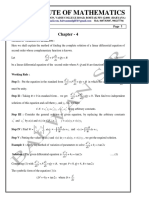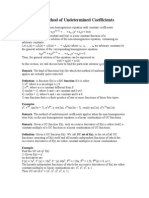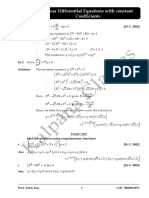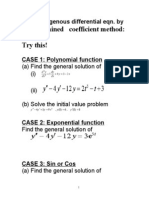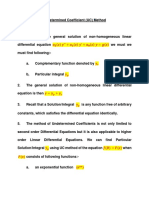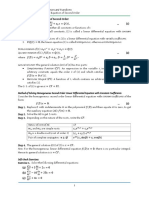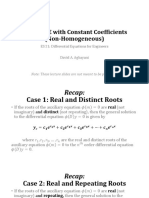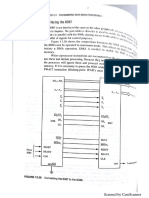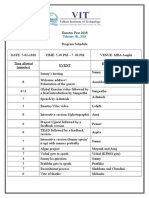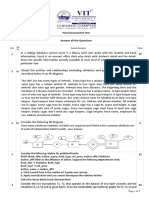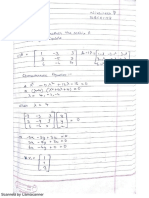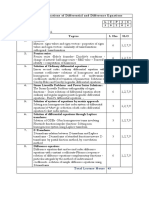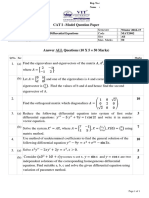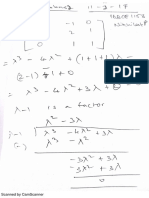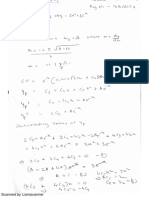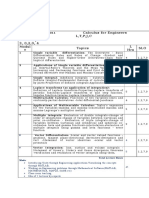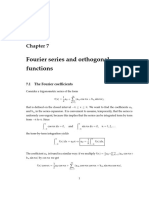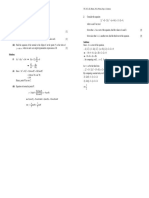0% found this document useful (0 votes)
909 views2 pagesParticular Integral UCmethod
The method of undetermined coefficients can be used to find the particular integral of a linear differential equation with constant coefficients. It involves determining the complementary function, obtaining the UC sets of the functions in the nonhomogeneous term, choosing a trial particular solution as a linear combination of a mutually disjoint UC set, and determining the coefficients by substitution into the original differential equation. Examples show finding the general solution to equations with exponential, trigonometric, and polynomial nonhomogeneous terms.
Uploaded by
Nikhilesh PrabhakarCopyright
© © All Rights Reserved
We take content rights seriously. If you suspect this is your content, claim it here.
Available Formats
Download as PDF, TXT or read online on Scribd
0% found this document useful (0 votes)
909 views2 pagesParticular Integral UCmethod
The method of undetermined coefficients can be used to find the particular integral of a linear differential equation with constant coefficients. It involves determining the complementary function, obtaining the UC sets of the functions in the nonhomogeneous term, choosing a trial particular solution as a linear combination of a mutually disjoint UC set, and determining the coefficients by substitution into the original differential equation. Examples show finding the general solution to equations with exponential, trigonometric, and polynomial nonhomogeneous terms.
Uploaded by
Nikhilesh PrabhakarCopyright
© © All Rights Reserved
We take content rights seriously. If you suspect this is your content, claim it here.
Available Formats
Download as PDF, TXT or read online on Scribd
/ 2






